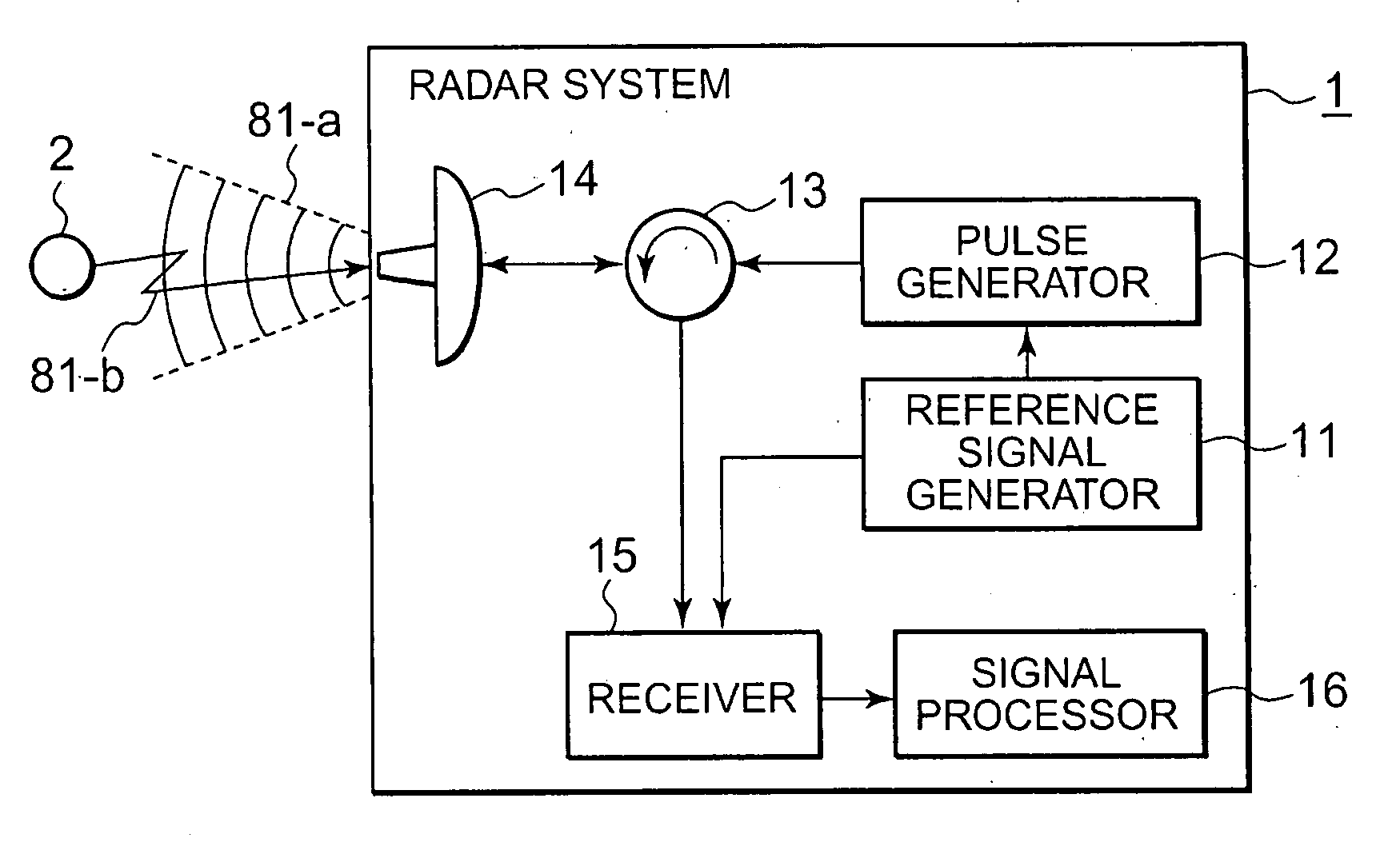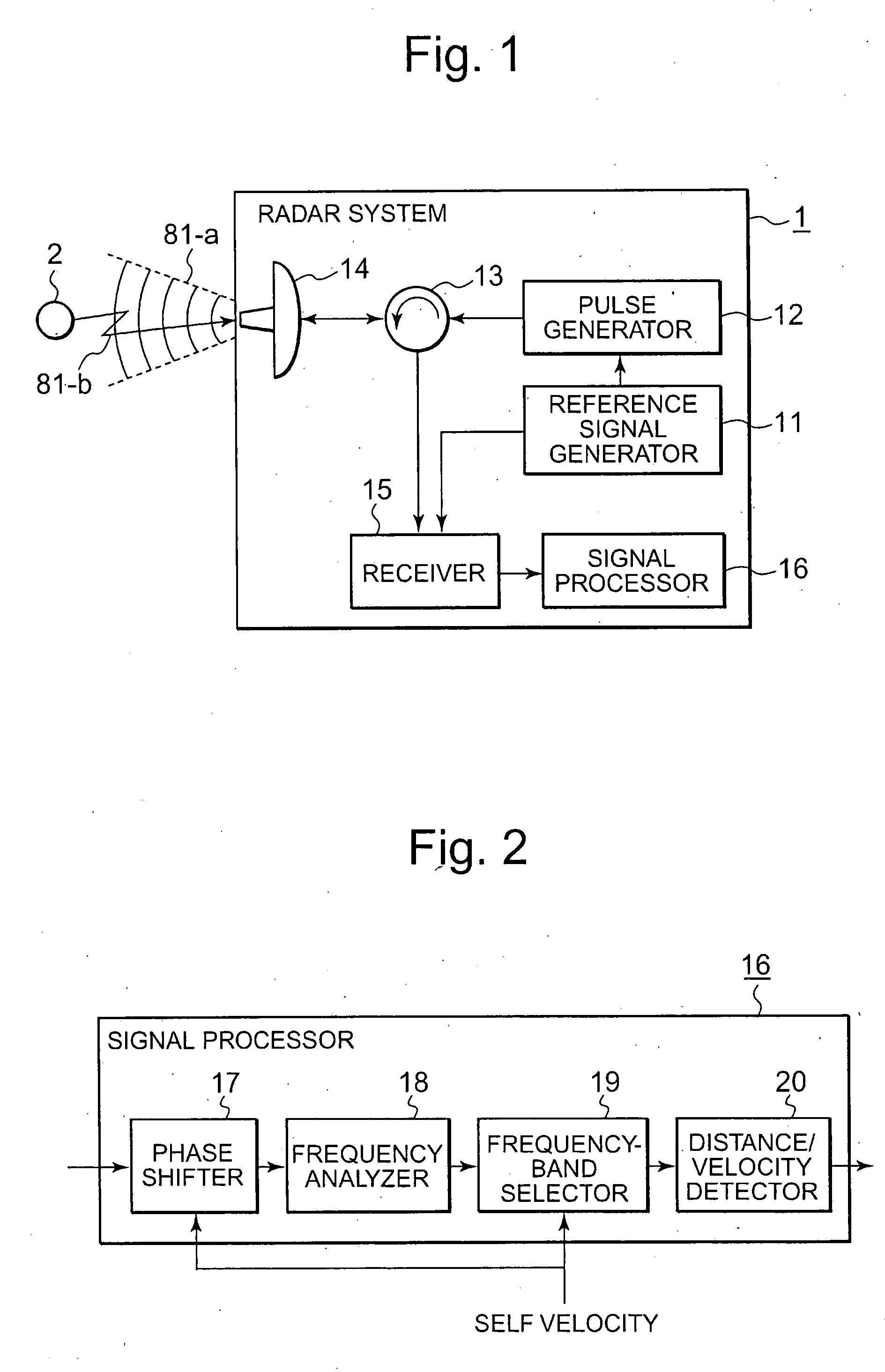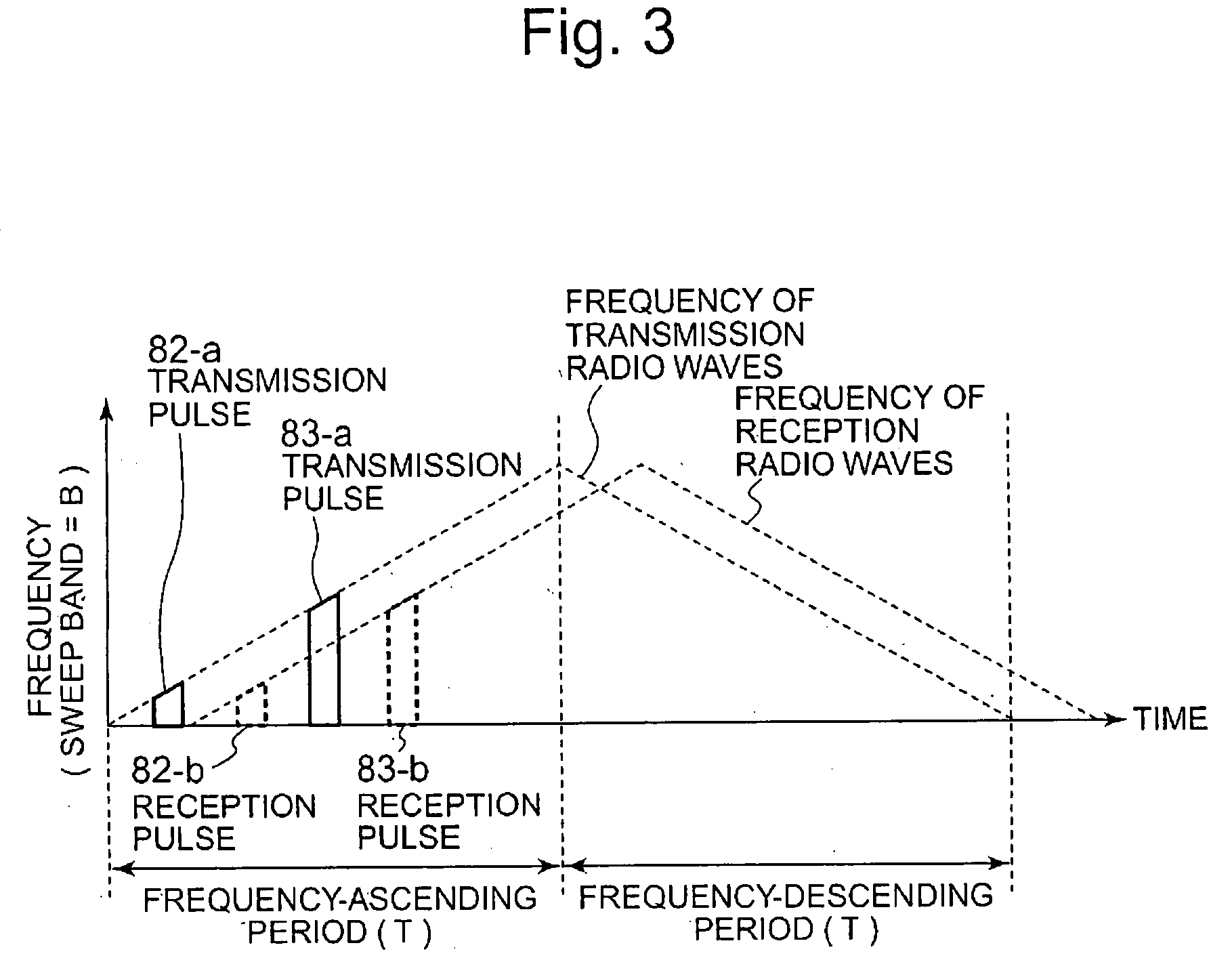Radar System
a radar system and unnecessary signal technology, applied in the field of radar systems, can solve the problems of difficult to stably suppress clutter spectrum, difficult to circumvent problems, difficult to separate true objects from clutter, etc., and achieve the effect of sufficient resolution of continuous wave radar systems, suppression of unnecessary waves, and high resolution
- Summary
- Abstract
- Description
- Claims
- Application Information
AI Technical Summary
Benefits of technology
Problems solved by technology
Method used
Image
Examples
embodiment 1
[0025]FIG. 1 is a configurational block diagram illustrating a radar system according to Embodiment 1 of the present invention. A radar system 1 in the diagram is a radar system mounted on a moving object (also referred as a moving platform) that moves at a velocity of ν0; and includes a reference signal generator 11, a pulsing device 12, a circulator 13, an antenna 14, a receiver 15, and a signal processor 16. The reference signal generator 11 is a circuit or an elemental device that generates a reference signal having a predetermined continuous waveform. The frequency of the reference signal generated by the reference signal generator 11 repeats in a certain cycle to continuously ascend and descend. A radar system, using such frequency-modulated waves, that measures relative distance to and relative velocity of an external object has been known as a FMCW radar system.
[0026]The pulse generator 12 is a circuit or an elemental device that transforms into a pulsed signal having predet...
embodiment 2
[0080]In Embodiment 2 according to the present invention, it will be explained that 2-frequency CW radar systems can also suppress unnecessary radio waves by dividing into bands output channels from FFT operations of beat frequencies.
[0081]The configuration of a radar system according to Embodiment 2 of the present invention is also illustrated by the block diagram of FIG. 1, in the same way as Embodiment 1. However, Embodiment 2 according to the invention differs from Embodiment 1 in the configuration of the signal processor 16. FIG. 5 is a configurational block diagram illustrating such a signal processor 16 according to Embodiment 2 of the present invention. As is apparent from its comparison with the configuration, illustrated in FIG. 2, of the signal processor in Embodiment 1, the signal processor 16 according to Embodiment 2 of the present invention has a feature in that the phase shifter 17 has been eliminated.
[0082]Next, the operation of the radar system 1 according to Embod...
embodiment 3
[0092]Next, as another aspect of the present invention, a radar system in which an HPF (high pass filter) is used will be explained in Embodiment 3.
[0093]A configuration of the radar system according to Embodiment 3 of the present invention is also illustrated by the block diagram of FIG. 1, in the same way as Embodiment 1. However, Embodiment 3 according to the prevent invention differs from Embodiment 1 in the configuration of the signal processor 16. FIG. 7 is a configurational block diagram illustrating a detailed configuration of the signal processor 16 in the radar system according to Embodiment 3 of the present invention. In the figure, comparing to that of Embodiment 1, its new aspect is that an HPF (high pass filter) 21 is newly provided. Also in the radar system according to Embodiment 3, information on velocity from a self-velocity sensor, not illustrated in the figure, is inputted into the HPF 21. Since the other configurational components are the same as those in Embodi...
PUM
 Login to View More
Login to View More Abstract
Description
Claims
Application Information
 Login to View More
Login to View More - R&D
- Intellectual Property
- Life Sciences
- Materials
- Tech Scout
- Unparalleled Data Quality
- Higher Quality Content
- 60% Fewer Hallucinations
Browse by: Latest US Patents, China's latest patents, Technical Efficacy Thesaurus, Application Domain, Technology Topic, Popular Technical Reports.
© 2025 PatSnap. All rights reserved.Legal|Privacy policy|Modern Slavery Act Transparency Statement|Sitemap|About US| Contact US: help@patsnap.com



